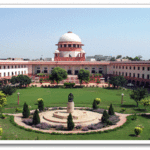By Lisa
Out & Around: Stories from a Not-So-Straight Journey
Jan 04, 2012
In 2009 in a landmark case, the Delhi High Court challenged the constitutionality of India’s anti-sodomy law, Section 377. The results have catapulted India into a stronger gay rights movement. Out & Around met with Aditya Bondyopadhyay (photo right), a leading attorney on the legal team that constructed the case. Aditya now spends most of his time training attorneys across India on LGBT rights.
Out & Around: Tell us about your work leading up to the decriminalization of homosexuality in 2009.
Aditya: I worked on the case beginning in 2001. The case became a focus of mobilization for LGBT activists. Earlier, people were doing their own things due to geography in this country being so vast. What the case really did was unite groups across India by way of a national movement. We had a common enemy, 377. We had the focus of everyone’s energy. We had huge national consultations around the case. We got strategic instead of impulsively working out of anger and pain.
Out & Around: What was the moment like for you when you won?
Aditya: My partner and I had been together for 8 years. He wanted to come with me to court. There was a huge crowd of people waiting for the decision. I was with the lawyers up front. When the judgement was announced, I cried. This was the only time I cried in court. I couldn’t help it. The whole room just erupted into this boisterous joy. Everyone was screaming and hugging one another. It was just like a dam bursting. A truly joyous moment. After 150 years of criminalisation and 8 years of fighting, we were no longer criminals in our own land.
Out & Around: What changes have you seen since the decision?
Aditya: 377 is just a first step. Nothing could happen until 377 changed.
For example, prior t0 2009 India’s biggest medical establishment in Delhi was doing aversion therapy with electric shocks. There was a complaint against the hospital with the National Human Rights Commission, but this was tossed out because homosexuality was still a criminal offense. They were trying to “cure criminals.”
In the future we need adoption laws, anti-discrimination laws, and maybe at some stage same-sex marriage. All these things we can now start working on now that 377 is out.
Out & Around: What are the differences in gay life for India versus the West?
Aditya: India is a shame-based culture. The West has a guilt-based culture. A single person in the West can feel guilty and therefore can atone for what makes him feel guilty. In India, being homosexual is a matter of shame which means that your socially unacceptable actions brings shame upon others. The person who opposes your actions may not even find anything wrong with homosexuality. It’s the whole notion that what you are doing may be looked upon as something bad by others. In other words, people are not coming from an inherently held believe like in the West. People are coming from how they think your actions will change their standing in society. As more people come out, sexuality will be normalized and the shame will diminish in India.
Out & Around: What are some of the difficulties for gay men in India? (photo right: Lisa, Aditya, Jenni)
Aditya: The male child is highly valued here in India. If the male child does something unmanly, that is looked down upon. Growing up, you get subtle messages about how men and women are supposed to behave. The roles are very defined. The woman is supposed to be subservient, quiet, and non-oppositional. These roles also extend to sexual acts. If you are homosexual, then you are considered something less than a man. You fall from the pedestal of manhood. What is less than a man? A woman.
Empowerment in India should be about ensuring proper gender equality where women’s status is established in society so that gay men’s status also simultaneously improves. The common enemy is patriarchy and the notion of male privilege. It’s about gender rights.



















